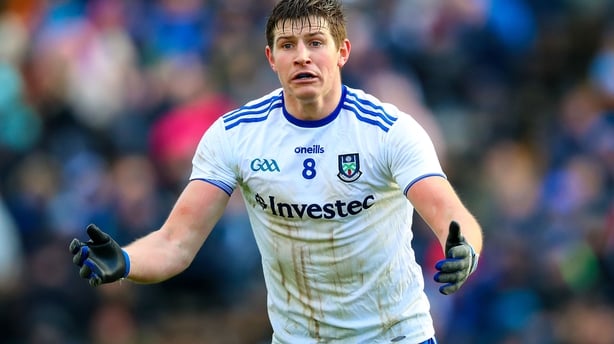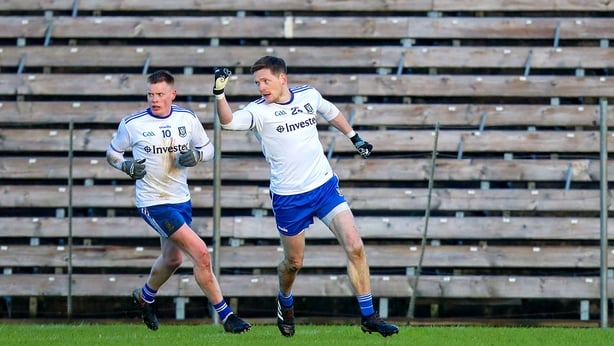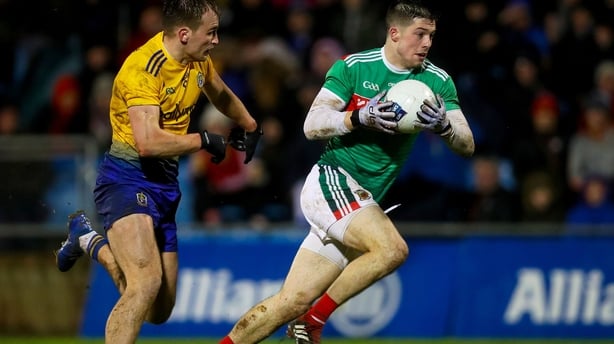The return of the Allianz Football Leagues over the weekend has reignited some old emotions that probably will never leave for anyone with the essence of the game in their bones.
Through the week leading in, anticipation around possibilities this season for our own team creeps up and pushes most of our cynicism to one side. Gradually, as the matches flow past – or grind in some cases – we realise that the visions we had were of summer conditions and the football we hoped for is a work in progress.
Hidden gem
One of the pities of the sequential-handpass debate through the autumn is that the potential of the offensive mark was virtually lost to public consciousness as an adjustment that could positively change the game. A week on and, to varying degrees in games over the weekend, that potential is screaming at us for attention.
In the most basic terms, this playing rule rewards accurate kick passing and the ability to win the ball cleanly.
Finally, something that the traditionalists and those working daily to develop the game agree on. If teams and coaches can expand their attacking repertoire around the new opportunity this presents, then the risk/reward balance of kicking direct shifts firmly back in favour of those who can do it well.
And so, it was fitting that the offensive mark announced itself seriously yesterday in an opening-day defeat for All-Ireland champions Dublin in Monaghan.
Of course there are many warning stickers to attach to first-round National League fixtures – not least the quality of missing players – but the manner and method of this victory for the Farney men should offer them and others food for thought.
Kicking is king
For some time, Dublin have carried the banner of "total football" in many people’s view and their range of skills under pressure are often cited as the feature that sets them apart when it counts. While that is regularly true, that view can overlook the other champion qualities that today’s Dublin have acquired in terms of game management, tactical mastery, physical toughness, mental toughness and owners of the biggest appetite for work in the game.
The challenge for the four or five teams hoping to overhaul the champions will remain to match and surpass all of those qualities but Monaghan have demonstrated that Dublin can also be outplayed on any given day.
Looking more closely at the kicking and use of space by both teams in Clones, the contrast across both halves was stark. Monaghan’s adjustment at half time with and without the ball finally found the key to limiting the Dublin attack and opening up more space for themselves.

With only Darren Hughes in his now customary cover position close to Rory Beggan in the first half, Dublin were able to build an attacking platform by kicking in front of their constantly moving forward line and support off it at pace. A two-point half-time lead didn’t reflect the openings Dublin had carved through Monaghan. That space wouldn’t be there in the second half.
Oddly, Dublin’s kicking from the middle third in this opening period was generally accurate but bouncing in front of the cutting forward. Though they found their men it allowed only a traditional attacking movement as the pass didn’t give the forward a marking chance – nor did their patterns of movement suggest they were interested in them.
Reinforcing the half-back line with an additional cover body in the second half, Monaghan completely wiped out any space for Dublin’s brilliant first-half movement and so there were no targets to kick to. In contrast, the Ulster men very obviously broke from defence with more urgency and looked early for kicking opportunities inside.
The strategy bore fruit 10 minutes into the second half when Monaghan’s hitherto-industrious inside pairing were replaced by Conor McManus and Stephen O’Hanlon. Crucially, both were able to win their own ball, given any decent opportunity.
Monaghan’s kicking was now more tailored to giving the forward a marking opportunity than Dublin’s had been when on top earlier in the game. McManus and O’Hanlon obliged – particularly off secondary runs in behind the defence after initially showing to the ball and cutting back.

Evolution gathers pace
With only the tiniest of test samples to draw conclusions from so far, the potential of the attacking mark to positively impact both playing styles and the outcome of games is exciting.
An obvious factor in the Clones experiment is the comparative preparation times that both teams had ahead of their league opener. Undoubtedly, Monaghan have had more time on the training pitch and pre-season games together to make a start at setting out patterns and ideals with the mark in mind.
From a coaching perspective, the National League now offers an additional intrigue, with the race to exploit the new dimension. Of course, minds will also be put to use in minimising teams’ susceptibility in the same way. Let’s hope there is more creativity in the first endeavour.

Out of step
There is no shortage of theories or proposals in the ether for the next rules experiments. However, the beginnings of Gaelic football's redemption as a spectator sport, which will ultimately become more enjoyable to play, are straightforward and within our grasp without reviewing the rules in any way.
Is it so difficult for referees to count steps? Is it beyond us to come to a consensus on what the tackle looks like and apply it consistently – even if it exists as a convention rather than a rule?
The game in Castlebar on Saturday night provided a microcosm of all that is demoralising in how the game is currently refereed on those two points alone. As uplifting as Brian Reape’s decisive finish was, not punishing the double digit steps en route was bordering on criminal.
If Gaelic football needs a champion off the field then it is one who is empowered to take control of the refereeing culture and take steps to give us consistency and an outlook that doesn’t treat forwards as endangered species and contact as a great plague.

